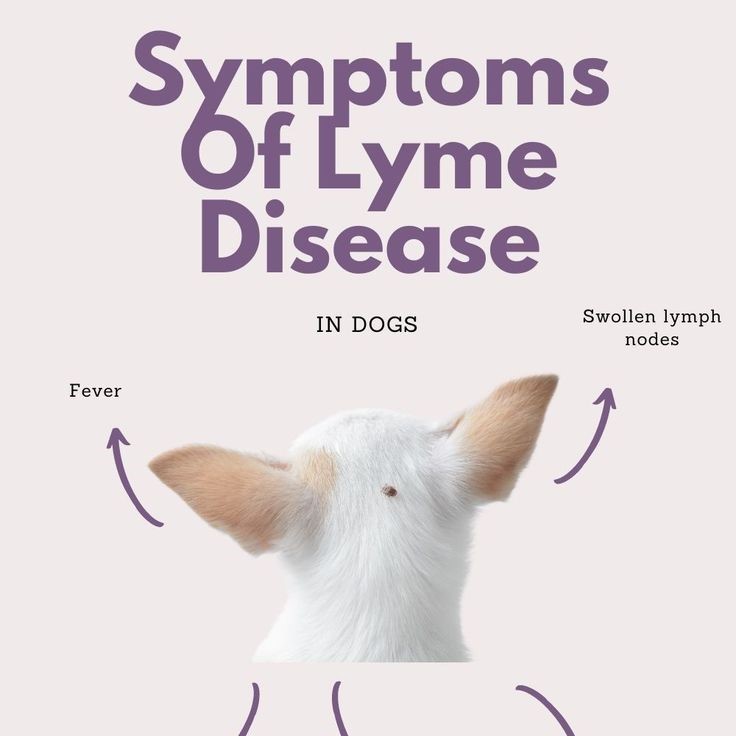Dog lyme disease life expectancy is a concern for many pet owners who want to understand the long-term impact of this tick-borne illness. While lyme disease can be serious, it’s important to know that dog lyme disease life expectancy can vary depending on several factors, including how quickly the condition is diagnosed and treated. In this article, we will explore whether can dogs live with lyme disease, discuss what are the three stages of lyme disease in dogs, and answer whether is lyme disease in dogs fatal. We’ll also look at what are at least 5 early signs of lyme disease and provide expert insights into managing this condition.

What Is Dog Lyme Disease?
Lyme disease is a tick-borne illness caused by the bacterium Borrelia burgdorferi. It affects both humans and animals, but dogs are particularly susceptible due to their outdoor activity and exposure to ticks. The disease spreads when an infected tick bites a dog and transmits the bacteria into its bloodstream.
Once the bacteria enter the body, they can travel through the bloodstream and cause inflammation in various organs, including the joints, kidneys, and nervous system. If left untreated, lyme disease in dogs can lead to serious complications, such as chronic arthritis, kidney failure, or even death.
However, dog lyme disease life expectancy is often positive when the condition is detected early and treated properly. Understanding the symptoms and taking preventive measures can significantly improve a dog’s chances of recovery.
In short, dog lyme disease life expectancy depends largely on timely diagnosis and appropriate treatment.
Can Dogs Live with Lyme Disease?
One of the most common questions among dog owners is can dogs live with lyme disease. The answer is yes—many dogs can lead long, healthy lives after receiving treatment for Lyme disease. However, the outcome depends on several factors, including how early the infection is caught, the dog’s overall health, and the effectiveness of the treatment.
With prompt veterinary care, most dogs recover fully from lyme disease. Treatment typically involves a course of antibiotics, such as doxycycline, which helps eliminate the bacteria from the body. In addition to medication, supportive care, such as rest and pain management, can help speed up the recovery process.
It’s important to note that some dogs may experience lingering effects, such as joint pain or fatigue, even after the infection has cleared. These symptoms usually improve over time with proper management.
So, can dogs live with lyme disease? Yes, with the right care and treatment, most dogs can live full and happy lives.

What Are the Three Stages of Lyme Disease in Dogs?
Understanding the three stages of lyme disease in dogs can help pet owners recognize the progression of the illness and seek timely treatment. While not all dogs go through all three stages, knowing what to look for can make a big difference in the outcome.
The first stage is the acute phase, which occurs within days to weeks after the tick bite. During this time, the dog may show mild symptoms like fever, loss of appetite, and lameness. These signs can come and go, making it difficult to detect.
The second stage is the subclinical phase, where the bacteria spread throughout the body but the dog shows no obvious symptoms. This stage can last for months or even years, during which the dog may appear healthy but still carry the infection.
The third and most severe stage is the chronic phase, which can lead to serious complications such as kidney damage, neurological issues, and persistent joint pain.
By understanding the three stages of lyme disease in dogs, you can better monitor your pet’s health and take action before the condition worsens.
Is Lyme Disease in Dogs Fatal?
A major concern for many pet owners is whether is lyme disease in dogs fatal. The good news is that while lyme disease can be serious, it is rarely fatal if treated promptly. Most dogs respond well to antibiotic therapy and make a full recovery.
However, if left untreated, lyme disease can lead to severe complications, such as kidney failure, which can be life-threatening. This is why early detection and treatment are so important.

In some cases, dogs may develop chronic symptoms that require ongoing management, but these are not necessarily fatal. With regular veterinary check-ups and proper care, many dogs with lyme disease can live long, healthy lives.
So, is lyme disease in dogs fatal? It can be, but only in rare cases and usually when the condition is not treated in time.
What Are at Least 5 Early Signs of Lyme Disease?
Recognizing the early signs of lyme disease in dogs is crucial for prompt treatment. If you notice any of the following symptoms, it’s important to consult a veterinarian immediately:
- Fever: A sudden high temperature is one of the first signs of lyme disease.
- Lameness: Dogs may limp or avoid putting weight on a particular leg due to joint pain.
- Loss of Appetite: A decrease in eating habits can indicate that something is wrong.
- Swollen Joints: Inflammation in the joints can cause stiffness and discomfort.
- Fatigue: Dogs may seem more tired than usual or less active than normal.
These symptoms can be subtle and may come and go, making it easy to miss them.
If you notice any of these early signs of lyme disease, don’t wait—seek veterinary care as soon as possible.
How Is Dog Lyme Disease Treated?
Antibiotic Treatment:
The primary treatment for dog lyme disease involves a course of antibiotics. The most commonly used antibiotic is doxycycline, which effectively targets and kills the Borrelia burgdorferi bacteria that cause the disease. This medication is usually given for several weeks to ensure the infection is fully cleared.

Anti-Inflammatory Medications:
In addition to antibiotics, your veterinarian may prescribe anti-inflammatory drugs to help reduce joint pain and swelling. These medications can improve your dog’s comfort, especially if they are experiencing lameness or stiffness due to the infection.
Pain Management:
Pain relief is an important part of the treatment process. Dogs with lyme disease often suffer from discomfort, so your vet may recommend specific painkillers to make your pet more comfortable during recovery.
Supportive Care:
Supportive care plays a key role in helping dogs recover from lyme disease. Your vet may also suggest limiting physical activity to prevent further strain on affected joints.
Follow-Up Visits:
After the initial treatment, your dog may need follow-up visits to the vet. These check-ups help confirm that the infection has been completely eliminated and that there are no lingering effects. Your vet will monitor your dog’s progress and adjust the treatment plan if needed.
Preventing Future Infections:
Preventing future tick bites is crucial to avoid re-infection. You should use tick prevention products such as topical treatments, collars, or oral medications. Regularly checking your dog for ticks, especially after outdoor activities, is also essential. Keeping your yard clean and free of tall grass or brush can reduce the number of ticks in your environment.
Following the Treatment Plan:
It’s important to follow your vet’s instructions carefully. Completing the full course of antibiotics and attending all scheduled appointments can significantly increase the chances of a full recovery. Staying vigilant about tick prevention helps protect your dog from future infections.
Preventing Lyme Disease in Dogs
Prevention is the best way to protect your dog from dog lyme disease. Since the disease is transmitted by ticks, reducing your dog’s exposure to these pests is essential.
There are several effective ways to prevent lyme disease in dogs. First, use tick prevention products such as topical treatments, collars, or oral medications. These can help repel or kill ticks before they have a chance to attach and transmit the bacteria.
Second, check your dog regularly for ticks, especially after walks in grassy or wooded areas. Ticks are most likely to attach to the ears, neck, and paws, so be sure to examine those areas carefully.
Third, keep your yard clean by mowing the lawn regularly and removing brush or tall grass where ticks tend to hide. This reduces the number of ticks in your dog’s environment.
Finally, consider vaccinating your dog against lyme disease if you live in an area where the disease is common. While vaccines aren’t 100% effective, they can significantly reduce the risk of infection.
By taking these steps, you can help dog lyme disease life expectancy improve and keep your pet safe from this potentially serious illness.

Conclusion
In conclusion, dog lyme disease life expectancy is generally positive when the condition is diagnosed and treated early. Many dogs can live long, healthy lives with proper care and treatment. However, the outcome depends on several factors, including the timing of diagnosis, the severity of the infection, and the effectiveness of the treatment.
We’ve explored can dogs live with lyme disease, discussed what are the three stages of lyme disease in dogs, and answered whether is lyme disease in dogs fatal. We’ve also looked at what are at least 5 early signs of lyme disease and provided guidance on how to treat and prevent the condition.
Whether your dog has already received a diagnosis or you’re looking to protect them from this illness, understanding dog Lyme disease life expectancy and taking proactive steps can significantly improve your pet’s health and well-being.









